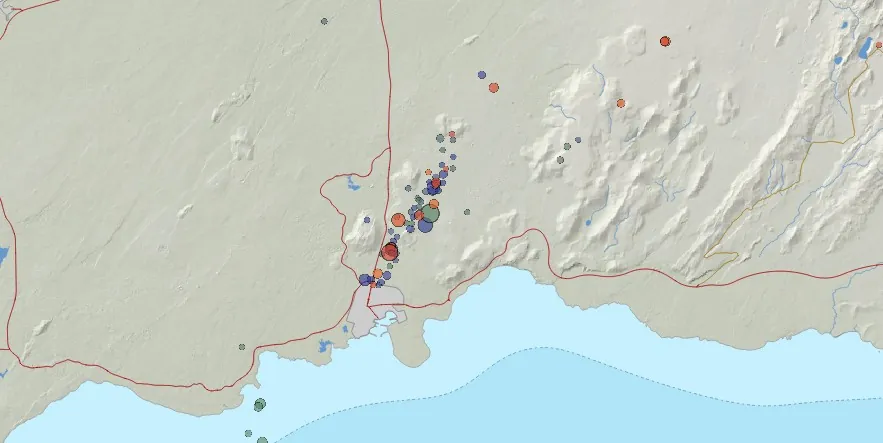Geodetic modeling indicates reduced eruption threat at Svartsengi, magma accumulation continues, Iceland

The Icelandic Meteorological Office (IMO) reports a decreased likelihood of an eruption at Svartsengi following the cessation of magma inflow to the November 10 dike. While magma accumulation continues beneath Svartsengi, the immediate eruption risk along the dike has significantly reduced.
On December 6, 2023, IMO updated the status of volcanic activity at Svartsengi, indicating a decreased likelihood of an eruption. The latest geodetic modeling results suggest that magma inflow to the dike, which formed on November 10, has likely ceased. This development significantly reduces the eruption chances along the dike, although magma accumulation continues beneath Svartsengi.
The ongoing activity at Svartsengi, which began in October, is not yet over and a new chapter may have begun with an increased chance of a new magma propagation and, subsequently, increased likelihood of an eruption, IMO said.
The dike beneath Grindavík was fed by magma accumulating beneath Svartsengi and this sequence of events will likely repeat, IMO added.
“When looking at the overall pattern with repeated magma accumulation, it can be estimated that the next magma propagation from Svartsengi might be on a smaller scale than the one previously formed on November 10… it could persist for several hours or days with an increased risk due to seismic activity and deformation during that period.”
Instruments monitoring the area are designed to detect signs of magma propagation, such as a sudden increase in seismic activity and rapid ground deformation changes. These signs typically appear several hours before any potential threat to Svartsengi or Grindavík. In the event of a magma propagation, the Icelandic Meteorological Office will immediately implement response plans for public safety.
In the last week, around 300 – 500 earthquakes were detected within a 24-hour period, with the largest being a magnitude 2.7 near Hagafell. The majority of this activity is concentrated along the middle of the dike at a depth of 3 – 4 km (1.8 – 2.5 miles). The changing stress levels in the Earth’s crust, due to subsidence in Svartsengi, are expected to result in ongoing minor seismic activity.
This situation at Svartsengi can be compared to the Krafla Fires that began in 1975. During that period, 20 magma propagations occurred, leading to nine eruptions. The activity around Fagradalsfjall also shows a similar pattern.
Modeling results indicate that the volume of magma currently accumulated under Svartsengi is less than that before the November 10 dike intrusion. Drawing parallels with the Krafla Fires, it is evident that the largest magma accumulation occurred before the first eruption, followed by smaller accumulations before subsequent magma propagations. A similar pattern is expected at Svartsengi, with slowly increasing seismicity likely to precede any new magma propagation.
IMO continues to closely monitor the area, prepared to detect any signs of magma propagation or other changes that could pose further danger near Svartsengi and Grindavík. The uncertainty surrounding the next magma propagation is considerable, making vigilance and preparedness essential.
References:
1 More magma propagation likely – IMO – December 6, 2023
Featured image: Earthquakes near Grindavik detected from December 5 0 credit: IMO

Commenting rules and guidelines
We value the thoughts and opinions of our readers and welcome healthy discussions on our website. In order to maintain a respectful and positive community, we ask that all commenters follow these rules.